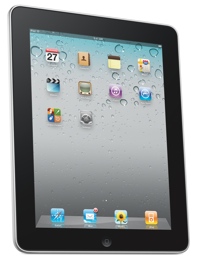Oklahoma State University has formally released its internal findings on an iPad pilot conducted during the Fall 2010 semester, showing that the device had a positive impact in an academic environment.
“We put this powerful and creative tool in the hands of faculty and students and the end result reached beyond enhancing the academic experience of our students,” says OSU President Burns Hargis. “The report outlines a possible decrease to student and administrative expenses, increased productivity, and how the iPad crosses between academic and personal barriers.”
Bill Handy, visiting assistant professor in the School of Media and Strategic Communications, and Tracy Suter, Ph.D. associate professor of marketing in the Spears School of Business, led the initiative. Each class integrated the iPad differently but both focused on specific measurable outcomes including: expense impact, how the devise was used, viability as an eReader and overall enhancement to a student’s academic experience.
“Consensus is the integration of the iPad can enhance a student’s academic experience and have a positive impact for faculty as well,” says Handy. “We used the iPad in every aspect of our course. The most important consideration is the device must be truly integrated. Simply distributing the device without evaluation of how the course might be modified for its use limits the impact.”
Among the enhancements noticed by both professors was an increase to the pace of the course, reaching traditional benchmarks sometimes weeks in advance.
“The increased pace is likely attributed to the mobile functionality of the device which allowed students to work in any environment, the change to the classroom environment, and the ability of all students to have complete access to the same technology, creating an equal and level playing field,” says Suter.
Both professors recommend the university should consider the full deployment of iPads for all students. Deans and department heads were given instructions to evaluate how best to use this and any technology device to enhance their student’s involvement.
Oklahoma State University has more than 35,000 students across its five-campus system and more than 23,000 on its Stillwater campus, with students from all 50 states and 118 nations. Established in 1890, OSU has graduated more than 200,000 students.
During the Fall 2010 semester, five sections of two courses across two colleges and two campuses participated in the Apple iPad Pilot Program. Handy and Suter led the project. In addition, Professor Bobbi Kay Hooper, Ph.D., School of Media and Strategic Communications, included the pilot in a larger pedagogical study. Below is an overview of the key outcomes.
Did the iPad increase or decrease expenses? While difficult to fully quantify, there is evidence to suggest a decrease in student expenses with maximum integration. Electronic versions of student textbooks were less expensive than traditional textbooks. If a student were to purchase e-books, the possible savings could cover the iPad hardware costs in two semesters. The university could also benefit from decreased paper and printing costs while the use of “cloud” computing could reduce future network storage needs.
How was the iPad used among students and faculty? iPad use had professional and personal benefits. Focusing on professional benefits, students were able to use the iPad in ways that outflanked a traditional computer, be it laptop or desktop. The iPad also was used as a substitute for paper and pen. Faculty were able to explore and recommend course-specific apps (i.e., software) to enhance the learning environment. Given the size and scope of Apple’s App Store, there were thousands of educational software possibilities plus having a built-in Web browser made the Internet more readily available.
Was the integration of an eReader an enhancement or detraction to the academic experience? The responses were mixed. On the one hand, students liked using the iPad to house their textbooks and suggested it promoted more reading. On the other hand, reactions from the beginning-of-the-semester expectations of planned use to the end-of-the-semester actual use saw e-book reading exhibiting the greatest change, a substantial decrease. Students thought they would use the iPad as an e-reader but did not do so as much as initially planned.
Was the integration of the iPad an enhancement to the academic experience? Self-report responses by pilot students indicated that 75% agreed or strongly agree with the statement, “I think the iPad enhanced the learning experience of this course.” Upon more detailed review, that number jumps to 92.8% among students who owned a Mac and falls to 70.4% among students who owned a PC.
Survey results also showed only 3% of students in one course would opt out of the iPad course for an identical course which didn’t include the iPad. From a faculty perspective, the greatest benefit was having uniform hardware and software available across the class. Said differently, faculty knew all students had access to the same learning tools. This was critical when planning assignments and class activities.
To view a video featuring the iPad Pilot program, go to: http://www.youtube.com/okstatenews#p/u/8/I-dWcdoUoNk .




